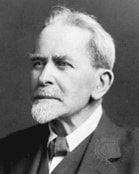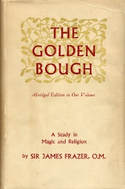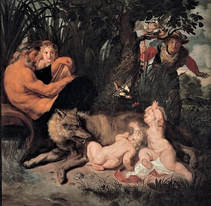|
When the corn huskers' joyous ring dance ends, Treemonisha wants to make a head garland like those worn by her friends for the harvest celebration. Her plan to cut leaves from the tree in front of her house prompts her mother Monisha's plea: No! not a leaf from that tree take. After Treemonisha and others ask to learn why that tree is “so dear,” Monisha responds with her aria “The Sacred Tree.” Such trees appear in religious beliefs throughout the world, in primitive religions as well as the world’s major religions. In perhaps the earliest book devoted to the topic, The Sacred Tree, or The Tree in Religion and Myth (1897), Mrs. J. H. Philpot comments on this universal archetype:
A few pages later, Philpot makes the point that such beliefs remain very much alive in African cultures at the time of her book’s publication: Thus on the Guinea Coast almost every village has its sacred tree, and in some parts offerings are still made to them. The negroes on the Congo plant a sacred tree before their houses and set jars of palm-wine under it for the tree-spirit. In Dahomey prayers and gifts are offered to trees in time of sickness. One of the goddesses of the Fantis has her abode in huge cotton-trees. In the Nyassa country, where the spirits of the dead are worshiped as gods, the ceremonies are conducted and offerings placed not at the grave of the dead man, but at the foot of the tree which grows before his house, or if that be unsuitable, beneath some especially beautiful tree selected for the purpose. From the Guinea Coast had come the largest numbers of African slaves, bringing their traditions with them. Given Joplin’s use of conjury, luck bags, goofer dust, the waning moon, and other common hoodoo beliefs, we should consider the opera’s sacred tree as another remnant of African traditions. From West Africa to East Africa, people believed that spirits inhabited certain trees and that those trees were “mediums between spirits and men” (Journal of American Folklore, VII: xxvii, Oct.-Dec. 1894). In some cases, such as among the Gĩkũyũ/Kikuyu people, sacred trees were regarded as the abode of a monotheistic god. For instance, in the Journal of African Cultural Studies, Matthew M. Karangi speaks of the mugumo tree as “a podium through which communion between the Gĩkũyũ/Kikuyu [the tribe] and Ngai [God] took place” (20: 1, June 2008). As Treemonisha prepares to cut leaves from the tree in front of her home, Monisha’s emphatic “No!” and her order to take the leaves from another tree are in keeping with traditional beliefs. In Man, a publication of the Royal Anthropological Institute of Great Britain and Ireland, Mervyn W. H. Beech explains that not all trees of the same species are sacred and that the only way to differentiate them is by testing them: “If the prayers that are uttered beneath them are answered doubtless Ngai is at hand, but if they are not heard it is obvious that Ngai cannot be present, and that the tree, therefore, is not sacred" (Vol. 13, 1913). Believing that all natural objects are animate, that they are inhabited by gods or spirits in the way many people believe a human body has a soul, traditional religions also believe that those objects feel pain and emotion. Cutting branches or even leaves from a sacred tree could hurt and anger Ngai or any other tree-dwelling spirit, and an angry spirit would seek revenge.
Through the brief wreath scene, Joplin establishes Monisha's need to reveal the long-kept secret. Ned and Monisha are not Treemonisha’s biological parents; instead, Monisha had found the infant under the tree in front of their house. As Monisha begins her aria, her words hint that she had regarded the tree as sacred before the longed-for baby appeared under it. Furthermore, as happened in the opera’s opening bag of luck scene, Monisha again contrasts her superstitious beliefs with Ned’s disbelief: One August night in bed I was lying, Joplin's preface supplies a piece of information missing from the libretto. Ned and Monisha had longed for and prayed for a child. As if in answer to their prayers, Monisha discovered the infant where she “thought ‘twould be, there beside that sacred tree.” She knew where to look--a further indication of Joplin's knowledge of sacred trees, his very inclusion of the tree being the first hint. Again, traditional African beliefs shed light on the opera. Joplin does not specify Ned and Monisha’s means of prayer, but given Ned’s lack of superstitions, we are probably to assume it was Christian prayer. By choosing to place the infant under the tree rather than on Ned and Monisha’s doorstep or at any spot other than under the tree, Joplin associates the child with the traditional belief in sacred trees as the giver of life and the fulfiller of prayers. Matthew Karangi points out that a sacred tree was known as the tree of Ngai, that Ngai was “the source of life.” and that the very name of the sacred tree (mugumo) was the word for the jugular vein. Karangi quotes an African prayer, the English translation of which he also provides: May our children be healthy . . . peace. May our homesteads be blessed . . . peace. May our women be fertile, and our cattle . . . peace. May there be no disease or any calamity . . . peace. Peace we beseech you, Ngai, peace. Mervyn Beech succinctly remarks, “The mugumo, then, is a medium through which prayers ascend to Ngai. Beneath its leafy branches men pray for riches and women that they may bear offspring.” Sir James Frazer speaks of the Waika tribe’s belief that to destroy a sacred tree “is equivalent to matricide, because the tree gives them life and nourishment.” Ngũgĩ wa Thiong’o’s The River Between, a colonial era Kenyan novel, provides an example of continuing belief in the sacred tree as a giver of life. Preparing his young son Waiyaki to go away to a mission school where he believes the boy can learn white man’s ways needed to lead his people, Chege has taken the boy to hillside on which stands a large tree. Chege speaks of their ancestors Gikuyu and Mumbi, father and mother of the tribe—the Adam and Eve of the Gĩkũyũ/Kikuyu culture. “This is a blessed and sacred place,” he tells Waiyaki; “There where Mumbi’s feet stood, grew up that tree.” He goes on to say how living in that sacred place, Gikuyu and Mumbi had nine daughters, who had many children of their own, these children eventually scattering to populate the country. In keeping with a common belief about sacred trees, the people and the tree are a part of one another. Believing that knowledge of the facts will prevent Treemonisha from harming the sacred tree standing before their home, Monisha explains how the tree saved the foundling’s life. The rain or the burning sun, you see, As the source of life, whether human or animal, the sacred tree often protect the life it created. Matthew Karangi points out that a tribe’s domesticated animals were sometimes protected from wild animals or enemy tribes by hiding them under sacred trees. Similarly, tribal members, themselves, sometimes hid among the branches where, even if found, they were generally safe, partly because of the enemy’s fear that they could easily attack from above and partly because sacred trees were believed to possess “the power of averting evil and evil forces in their families and in society as a whole.” If we view the tree in front of Ned and Monisha’s home as the mother or life force answering their prayers by offering forth and protecting their foundling daughter, we can see all the more reason that the child played under the tree, thus prompting her given name Monisha, after her mother, to be changed to Treemonisha. In addition to associating Treemonisha with the sacred tree as the giver and sustainer of life, her appearance under an archetypal tree may also symbolize the leadership role that she will later play or perhaps predestine her for that role. Although the "Sacred Tree"aria does not mention Ned and Monisha’s desire to educate their daughter, Joplin’s preface speaks of their hope that an educated daughter could eventually lead her people to “aspire to something better and higher than superstition and conjuring.”
A big Mugumo tree stood near the edge of the hill. It was a huge tree, thick and mysterious. Bush grew and bowed reverently around it. And there the ancient tree stood, towering near the hill, watching as it were the whole country. It looked holy and awesome, dominating Waiyaki’s soul so that he felt very small in the presence of a mighty power. This was a sacred tree. Joplin’s characterization of Monisha as a believer in sacred trees helps keep traditional beliefs alive. Why he rejects the conjurers’ superstitions while seeming to accept a belief in sacred trees is uncertain. Perhaps, as Ed Berlin suggests in King of Ragtime: Scott Joplin and his Era, Joplin may have had Wagner’s trees in mind in Die Walküre and Siegfried. Perhaps the survival of sacred trees in African American spirituals may have played a role in that acceptance. Roll, Jordan, Roll, for instance, opens with “My brudder sittin’ on de tree of life/An’ he yearde when Jordan roll.” Another spiritual sometimes called Run, Mary, Run or You Got a Right uses a sacred tree as its central focus: Run, Mary, Run, Although versions of both spirituals vary from source to source and the two songs differ from each other, they have something important in common. By referring to the Jordan, which Moses and his people crossed to reach the Promised Land, and by encouraging escape from slavery, both offer hope. By portraying Treemonisha as a role model and a leader, Joplin does the same.
Having been named after her adoptive mother Monisha and then having had her name changed "because [the child] loved the tree,” Treemonisha, is destined to give new life to, protect, and enlighten her people. She is a part of the tree, and the tree is a part of her. Comments are closed.
|
AuthorI am a retired community college professor and the great-granddaughter of composer, orchestrator, arranger, organist, and teacher William Christopher O'Hare. Click the "Read More" link to see each full blog entry.
Archives
November 2020
Categories
All
|





 RSS Feed
RSS Feed